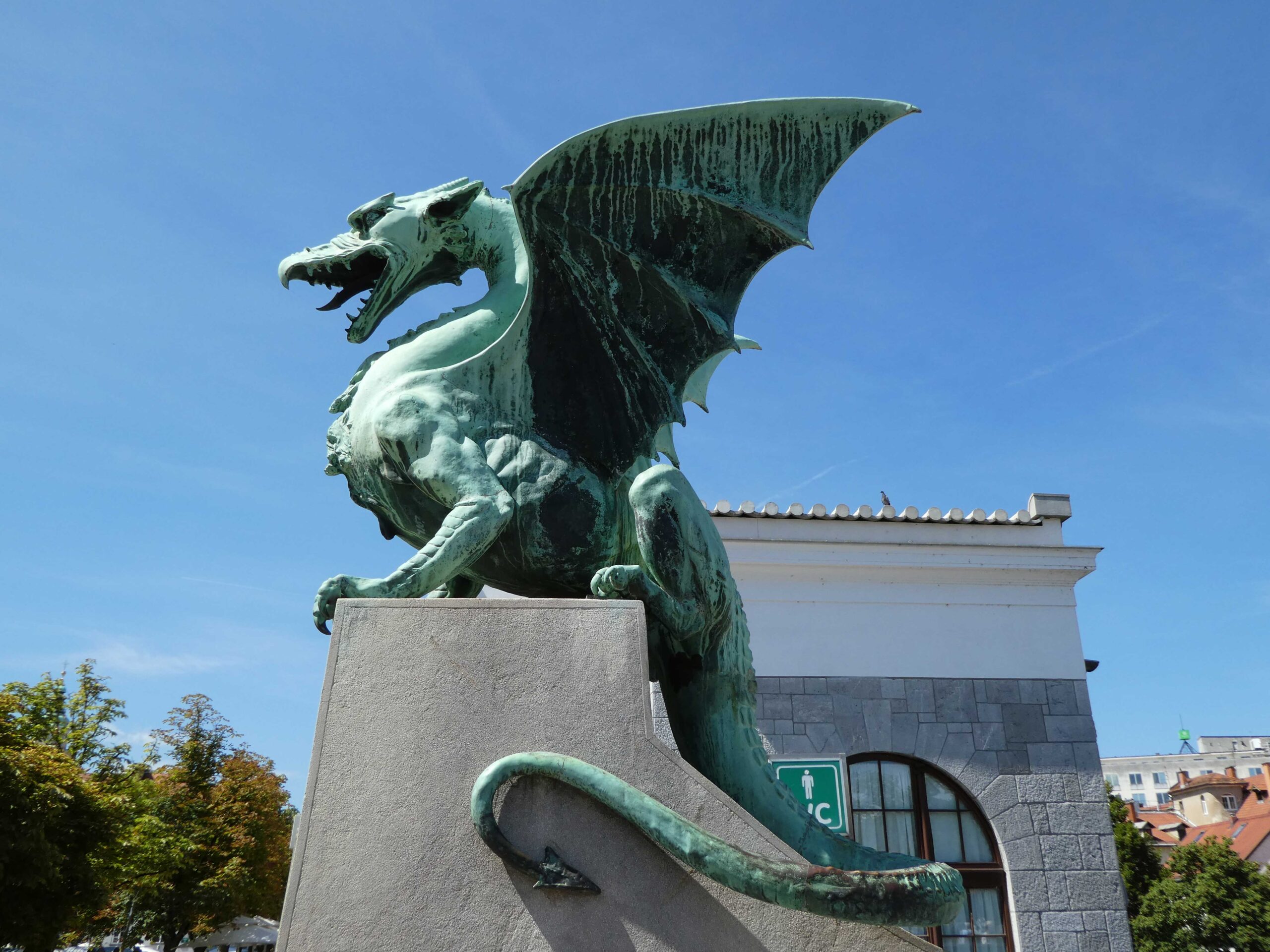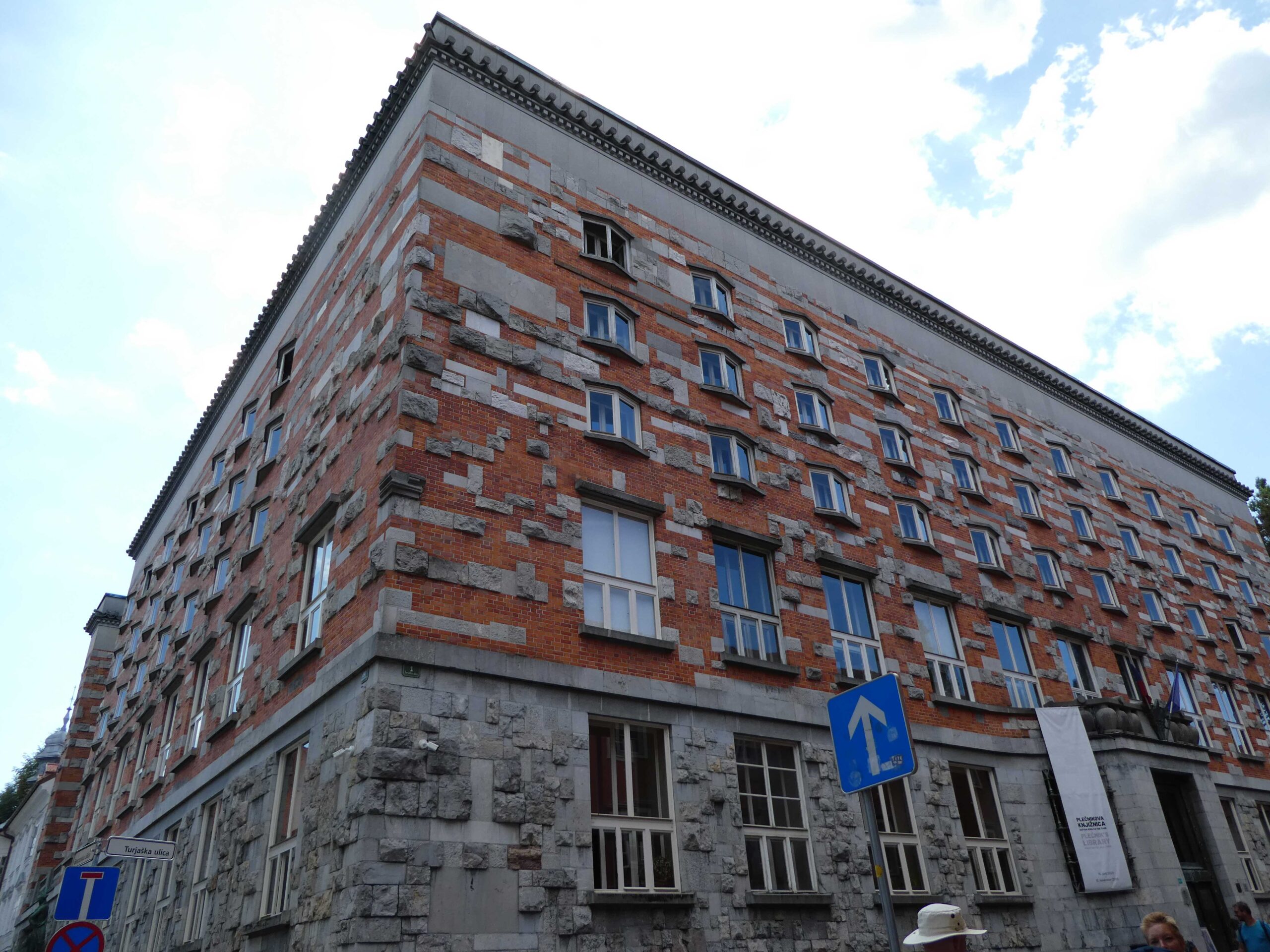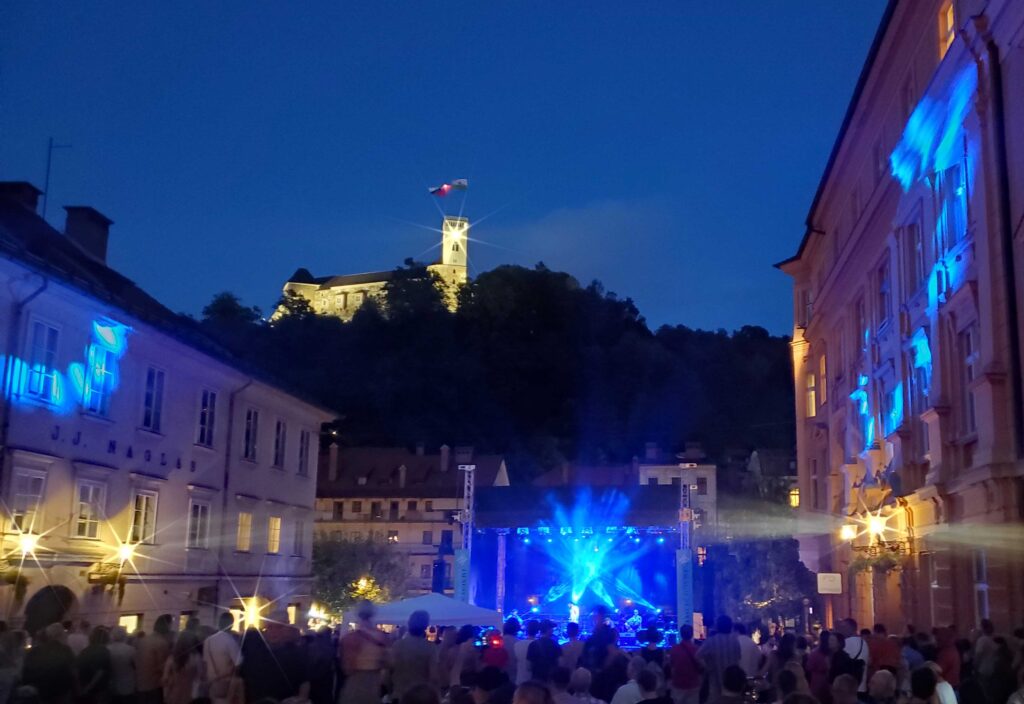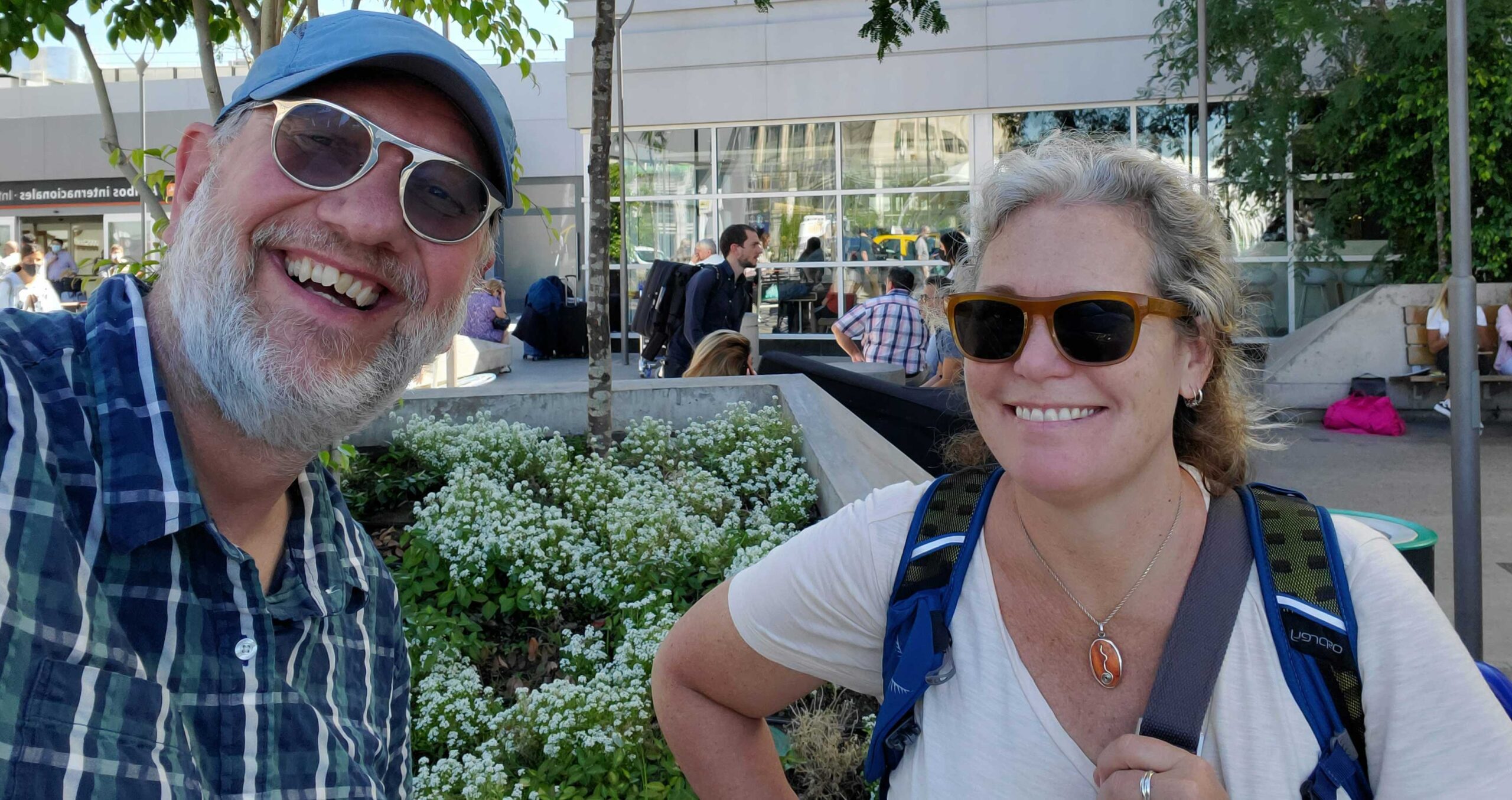Our European adventures started on 24-August-22 in the charming Slovenian city of Ljubljana. The heart of the old town is the Ljubljanica river where tourists gather on the banks in restaurants and cafes and tour boats float lazily under the 5 iconic bridges that connect the city’s two halves.

One small bit of interesting history about Ljubljana is that it is said to have been haven to Jason and the Argonauts along their journeys and the actual spot where Jason slew a dragon that was terrorizing the locals. Because of the folklore, the dragon is the symbol and icon for the city and can be found everywhere.

We’re doing a lot of traveling in short periods of time. So we don’t get too far behind on sharing our adventures, we’ll only provide a small taste of Ljubljana here. And when we say “taste,” we mean it. The Slovenian culture is undeniably a food culture.
The main feature along the waterfront is the market building that fronts the open-air markets behind. Market culture is really strong in Ljubljana, and every Friday there’s a street food market where local restaurants open booths and the entire town turns out from breakfast through dinner to sample from the stalls and enjoy the raucous atmosphere.

Jake had some of the hottest Thai food he’s ever eaten and Ande had Indian food. We also sampled street tacos, and there was paella, Argentinian steak, Korean food, and just about anything else you could imagine. Odd that we’d travel to Slovenia to enjoy some of the best street food available from international cuisines. We did also keep it traditional. Seafood is big in Slovenia, and during one lunch, we tried to sample it all.

Our guidebooks all said that the main activity to enjoy in Ljubljana was sitting in cafes eating and drinking and taking in the city and people watching. We embraced that whole heartedly while we were there, but we did also venture out and take some of the usual tourist photos.
Ljubljana is a city of squares, referred to as Trgs in Slovenian, and the main square in the center is Prešeren Square, named after Slovenia’s most famous poet France Prešeren. There are some great stories about his statue in the square and slightly icky unrequited love, but we’ll let you look that up for yourselves. The main impression it left on us was that we had just entered a world where the statues in the main squares were no longer men on horseback with big guns or swords. We had entered a world where arts and culture were the primary focus and tales of war were pushed into the background.

The gathering you see in the middle of the square is actually somewhat of an art installation itself. Signs warn you of the rainy weather, and the cables overhead support a sprinkler that allows anyone in need to go enjoy a little rain on a hot day.
The city itself is a work of art and the vision of a single man. Much of it was designed and created by local architect Jože Plečnik. The city suffered a serious earthquake in 1895, and more than 1,400 buildings were destroyed. It was a clean slate just waiting for a talented young architect to remake Ljubljana into what it is today. Many people who visit the city comment that it feels a bit like Prague. There is a reason as many of the improvements to the city were inspired by earlier architectural work in Prague, much or which (including the Prague Castle rehab) was also designed by Plečnik. However, Ljubljana is unmistakably its own city.
One of Plečnik’s most iconic and unique buildings in the city is the library on the university campus. He designed the windows to look like books and created an interior that takes visitors from the darkness of ignorance into the light bestowed by knowledge. Every inch of the building has some metaphorical and local significance right down to the stones used in construction.

The library and market buildings are obvious centerpieces of the city created by Plečnik, but even the common buildings designed and built by unnamed artisans have a flare of their own. The town itself is a living historic art display.

On the subject of art, architecture isn’t the only focus. Ljubljana is also home to a world renowned music school, and the city was in the middle of a summer music festival. There were stages and events everywhere. All you had to do was wander down any street to a square to find a live performance. One concert that we caught actually featured a hurdy-gurdy of all things, filling the air with a sound similar to bagpipes. It was certainly an interesting experience. What made it even more fun was the light show and clear sky with Ljubljana Grad on the hill in the background.

In a city where every part of the local experience seems curated for your enjoyment, we weren’t surprised to also find this spirit carried on in the local history museum. Your typical experience would be wandering through halls and halls of portraits, paintings, and sculptures. The curator in Ljubljana actually made it a living interactive experience where the viewer becomes part of the art. It was really fun, and this is one of our favorite pictures from our time in Ljubljana.

The display is actually the full depth of the room, and you can wander around several layers of Ljubljana’s history in one place. The unique playfulness of the curation of a bunch of old stuff that may otherwise be of little interest kind of sums up our impressions of Ljubljana. It is vibrant and alive but with an aged historic charm. We are kind of in love with this little city — beautiful, friendly, well-run (it is obvious), clean, safe, and fairly untouristed — basically perfect. Don’t go, you’ll ruin it. ( ;

Gorgeous photos! I’m so glad you are doing this!
It truly looks lovely.. thanks for sharing. Mom c
Great photo of Ande! She fits right in with the others.